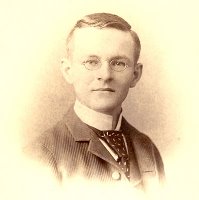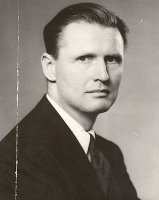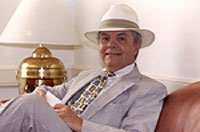 grown up in the Cleveland Public Library system, worked at a branch, later at Main Library, and returned there to become a department head in the 1960's. During all this time CPL's book collections were arranged by a modified Dewey system devised by the noted Librarian William Howard Brett (1846-1918), who was Director of the Cleveland Public Library from 1884 to 1918. Indeed Mr. Brett was a great administrator and innovator. He pioneered the author-title-subject catalog in the 1880's, opened library shelves to free access, started a system of neighborhood branches, and organized the Main Library into subject departments. He was the founding Dean of the CWRU Library School and a President of the American Library Association. He is considered one of the great names in U.S. library history.
grown up in the Cleveland Public Library system, worked at a branch, later at Main Library, and returned there to become a department head in the 1960's. During all this time CPL's book collections were arranged by a modified Dewey system devised by the noted Librarian William Howard Brett (1846-1918), who was Director of the Cleveland Public Library from 1884 to 1918. Indeed Mr. Brett was a great administrator and innovator. He pioneered the author-title-subject catalog in the 1880's, opened library shelves to free access, started a system of neighborhood branches, and organized the Main Library into subject departments. He was the founding Dean of the CWRU Library School and a President of the American Library Association. He is considered one of the great names in U.S. library history. Our associate in WRA Archives, Lynna Piekutowski, alerted me that one of our alums, Peter Lewis Brett, class of 1945, might be a descendant of Mr. Brett. On further inspection, we learned that he was the grandson of the great library pioneer, and his own father was also named William Howard Brett. Since Peter Brett is listed as the class agent for '45, I gave him a call and we had quite a conversation about the legacy of his distinguished grandfather. Peter Brett was proud of the fact that his grandfather had served in the Civil War, entering as a drummer, and that he later attended Western Reserve College in Hudson for one year, 1870-71. But all four of Mr. Brett's sons were college graduates (West Point, VMI, Dartmouth, and CWRU) and all went on to noted careers. Three served in World War I, one later becoming a 3-star general in the Army Air Force.
Our associate in WRA Archives, Lynna Piekutowski, alerted me that one of our alums, Peter Lewis Brett, class of 1945, might be a descendant of Mr. Brett. On further inspection, we learned that he was the grandson of the great library pioneer, and his own father was also named William Howard Brett. Since Peter Brett is listed as the class agent for '45, I gave him a call and we had quite a conversation about the legacy of his distinguished grandfather. Peter Brett was proud of the fact that his grandfather had served in the Civil War, entering as a drummer, and that he later attended Western Reserve College in Hudson for one year, 1870-71. But all four of Mr. Brett's sons were college graduates (West Point, VMI, Dartmouth, and CWRU) and all went on to noted careers. Three served in World War I, one later becoming a 3-star general in the Army Air Force.Peter confirmed his own happy years at WRA where he was captain of the football team in the
 fall of '44, played baseball and served on the school council and in the "R" Club. He has great memories of the WRA masters of that time, especially Rusty Cleminshaw (pictured to the right), Scotch McGill, Chan Jones, Ray Mickel and others. He has lived in the Washington, D.C. area for years and soon will move into a new condominium in Reston, Va. He mentioned that his older brother had done much work on genealogy and had recently presented some family materials to the Cleveland Public Library. Both Peter and his brother, William Howard Brett III, continue to be proud of the achievements of their grandfather. An excellent book about Mr. Brett is Open Shelves and Open Minds by C. H. Cramer (1972).
fall of '44, played baseball and served on the school council and in the "R" Club. He has great memories of the WRA masters of that time, especially Rusty Cleminshaw (pictured to the right), Scotch McGill, Chan Jones, Ray Mickel and others. He has lived in the Washington, D.C. area for years and soon will move into a new condominium in Reston, Va. He mentioned that his older brother had done much work on genealogy and had recently presented some family materials to the Cleveland Public Library. Both Peter and his brother, William Howard Brett III, continue to be proud of the achievements of their grandfather. An excellent book about Mr. Brett is Open Shelves and Open Minds by C. H. Cramer (1972).






























